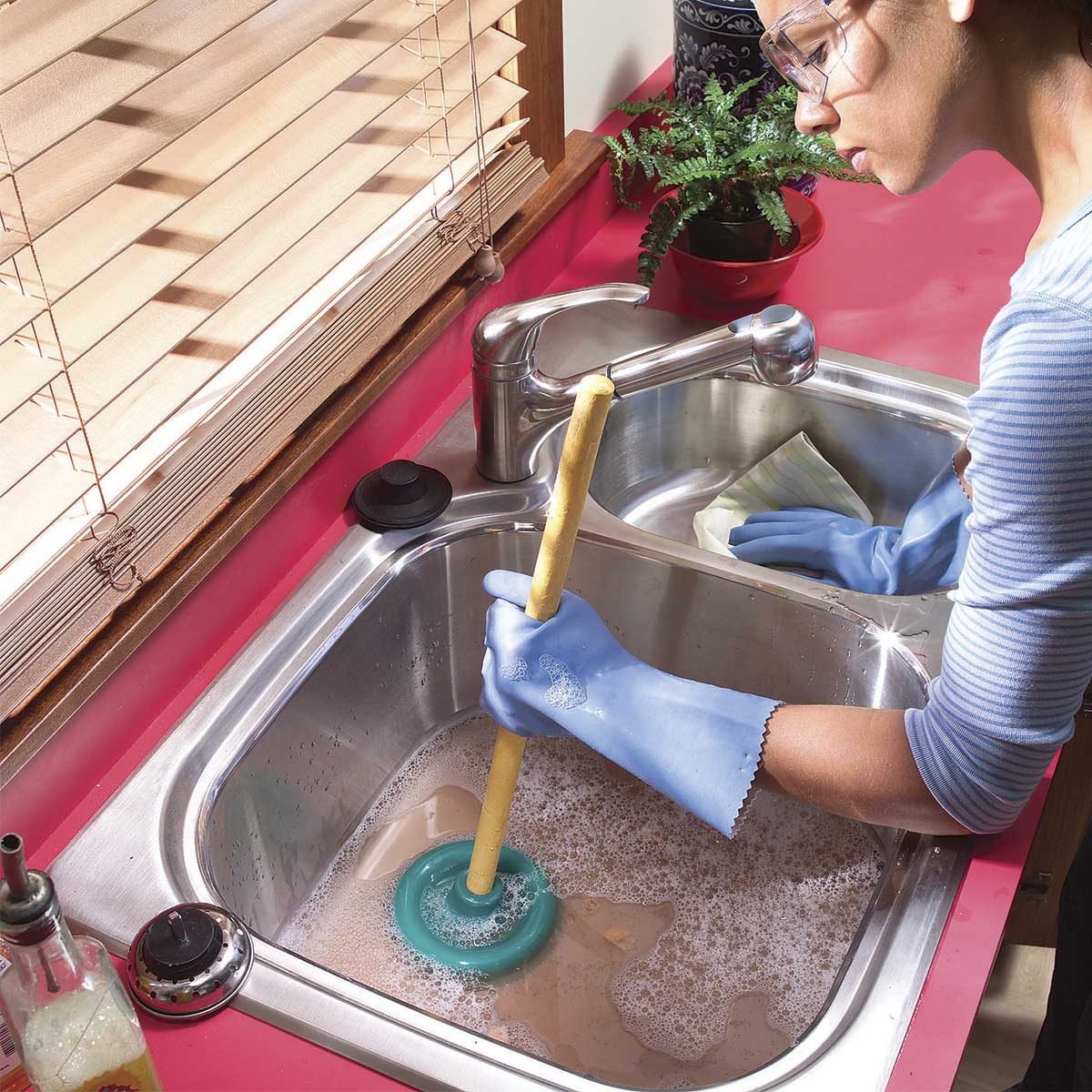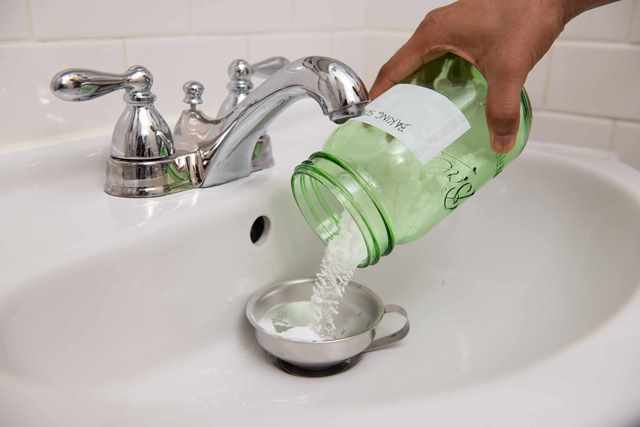We have discovered the article about Why Is My Sink Not Draining? below on the net and think it made perfect sense to write about it with you on this page.

It's not typical for your kitchen sink to clog up numerous times in one month. If your sink obstructs two times a week, there's some difficulty going on.
A blocked kitchen drainpipe does not just slow down your jobs, it weakens your whole plumbing system, gradually. Here are some common habits that urge sink clogs, and also exactly how to prevent them.
You need appropriate waste disposal
Reusing waste is fantastic, but do you take notice of your natural waste as well? Your kitchen should have 2 separate waste boxes; one for recyclable plastics and another for natural waste, which can end up being garden compost.
Having an assigned trash bag will certainly aid you as well as your household avoid throwing pasta and also various other food remnants down the drain. Typically, these residues take in moisture as well as become obstructions.
Somebody tried to clean their hair in the kitchen area sink
There's a right time and also location for everything. The kitchen area sink is just not the ideal place to clean your hair. Washing your hair in the kitchen sink will certainly make it clog one way or another unless you utilize a drainpipe catcher.
While a drain catcher could capture most of the after effects, some strands might still get through. If you have thick hair, this might be enough to decrease your drainage and also eventually create a clog.
You're tossing coffee down the drain
Made use of coffee grounds as well as coffee beans still absorb a considerable quantity of moisture. They might seem little sufficient to throw down the drainpipe, however as time goes on they start to swell and occupy more room.
Your coffee grounds need to go into natural waste disposal. Whatever portion gets away (perhaps while you're depleting) will be dealt with during your regular monthly cleanup.
You've been consuming a lot of oily foods
Your kitchen sink might still get obstructed even with natural garbage disposal. This may be due to the fact that you have a diet plan abundant in greasy foods like cheeseburgers.
This oil coats the insides of pipelines, making them narrower and more clog-prone.
Your pipeline wasn't repaired appropriately in the first place
If you've been doing none of the above, however still obtain regular blockages in your cooking area sink, you ought to call a plumber. There might be an issue with just how your pipelines were installed.
While your plumber shows up, look for any kind of leakages or irregularities around your kitchen area pipelines. Do not try to fix the pipes on your own. This might create an accident or a kitchen flood.
There's even more dust than your pipelines can handle
If you get fruits directly from a ranch, you might see even more kitchen dirt than other people that go shopping from a shopping mall. You can conveniently fix this by cleaning the fruits and veggies effectively before bringing them right into your house.
Melt the sludge
The mistake isn't from your cooking area sink in all
Possibly the issue isn't from your kitchen area sink, but the whole drainage system. In such a case, you may notice that sinks and also drains get clogged every other week. You need a professional plumbing service to fix this.
What to Do When Your Kitchen Sink Won’t Drain
Many of us have experienced something like this: one minute you are washing a pile of dirty dishes, and the next you hear a strange gurgling sound coming from the mechanical depths of your kitchen sink. The water is staying put, perhaps even changing colour and starting to rise; suddenly the soundtrack to Jaws is playing, and you realize you are dealing with… a clogged sink! Usually, you have to act quickly, but don’t panic just yet. Non-toxic home remedies and DIY solutions can do the trick, so before you call a plumber, read on to find out what you can do when your kitchen sink won’t drain.
What Causes Your Sink to Clog?
It’s great to know how to properly care for your kitchen sink so you can keep your drain and pipes running smoothly. For instance, some foods and products should never be washed down your drain, like grease, oil, and coffee grounds. Why? Grease and oil will eventually congeal at cold temperatures, and coffee grounds clump together when they harden. If you run hot water down your drain to flush them out, they will still cause trouble further down your pipe.
Dumping foods like meat, fibrous fruits and veggies like celery or banana peels, and starches such as noodles, rice and potatoes down your drain is also a big no, even if you have a garbage disposal. Food trapped in your disposer is a common problem, often leading to a blocked drain, so be sure not to overload it. Instead, put all your food scraps in your compost or green bin. Think of your drain as a major artery: you don’t want to clog it by putting harmful food and waste down your sink which can build up over time and cause problems.
Popular Home Remedies: What You’ll Need
Drain cleaners like Liquid Plumr or Drano often contain chemicals that are corrosive and harmful to the environment, so it’s best not to use them. Instead, try using natural remedies and the following life hacks to remove any debris. You’ll need to have the following items handy: rubber gloves (if you don’t want to dirty your hands), baking soda, salt, vinegar/lemons (or lots of lemon juice), a coat hanger, a plunger, a mug or container for scooping water, and some large buckets. You can also purchase a gadget called a Zip-It, which is an alternative to using a coat hanger. Ideally, you will already have many of these household items lying around, but a quick trip to a supermarket or dollar store should do the trick.
Boiling Water Techniques
The first thing you’ll need to do is remove everything from your sink (dishes, sponges, etc.) and start bailing out the excess water into a bucket. Once it is as empty as possible, and no water is filling back up into your sink, bring a kettle of water to a boil and dump its entire contents down the drain. Hot water can often loosen particles and clear a pathway.
If nothing happens after a few minutes, bail the water out and try again. If this is unsuccessful after a few attempts, pour half a cup of salt down your drain, followed by more boiling water. Wait for a few minutes to see if the water level starts to lower. Again, if nothing happens, you can try again, or try a new approach.
Baking Soda Techniques
Same as before, remove all water from your sink. Pour half a cup of baking soda followed by half a cup of white vinegar or lemon juice down your drain, and once the solution stops fizzing, cover with a stopper or a wet dish towel for about 15 minutes. Run hot water down the drain to check if the blockage is gone. You may need to repeat this a few times to clear the mess.
Alternatively, mix half a cup of salt with one cup of baking soda (do not add water), but for best results, you must let this sit for a few hours or overnight. Test it out after by pouring a pot of boiling hot water down the drain.
Go Fish: Coat Hanger or Zip-It Technique
If your sink is still causing you grief, unbend a wire coat hanger into a straight line with a hook, or use a Zip-It to fish out the clog. An alternative to properly snaking your drain, insert either of these tools down your drain until you encounter any resistance, and clear the clog by pulling it up. No luck? The clog might be further down.
Take the Plunge
If these previous techniques don’t work, a little bit of elbow grease may be required. For homeowners with a garbage disposal, always unplug it before plunging and check for any clogs inside. If you have a dishwasher, use a clamp to seal off the drain line – you don’t want any dirty water flowing back into your appliance! Once you have done that, you are ready to plunge. Fill the clogged sink with enough water so the rubber part is sealed tightly around your drain, and work the plunger until you feel something dislodge. It may take a few minutes of plunging for water to start flowing normally down the drain.
https://blog.homestars.com/what-to-do-when-your-kitchen-sink-wont-drain/

Do you really like more info about Why Is My Sink Not Draining?? Place feedback down below. We would be interested to listen to your reactions about this blog post. We hope to see you back again later on. Sharing is nice. Who knows, you may very well be doing someone a favor. We take joy in reading our article about Five Ways to Fix a Slow Sink Drain.
Book Your Appointment